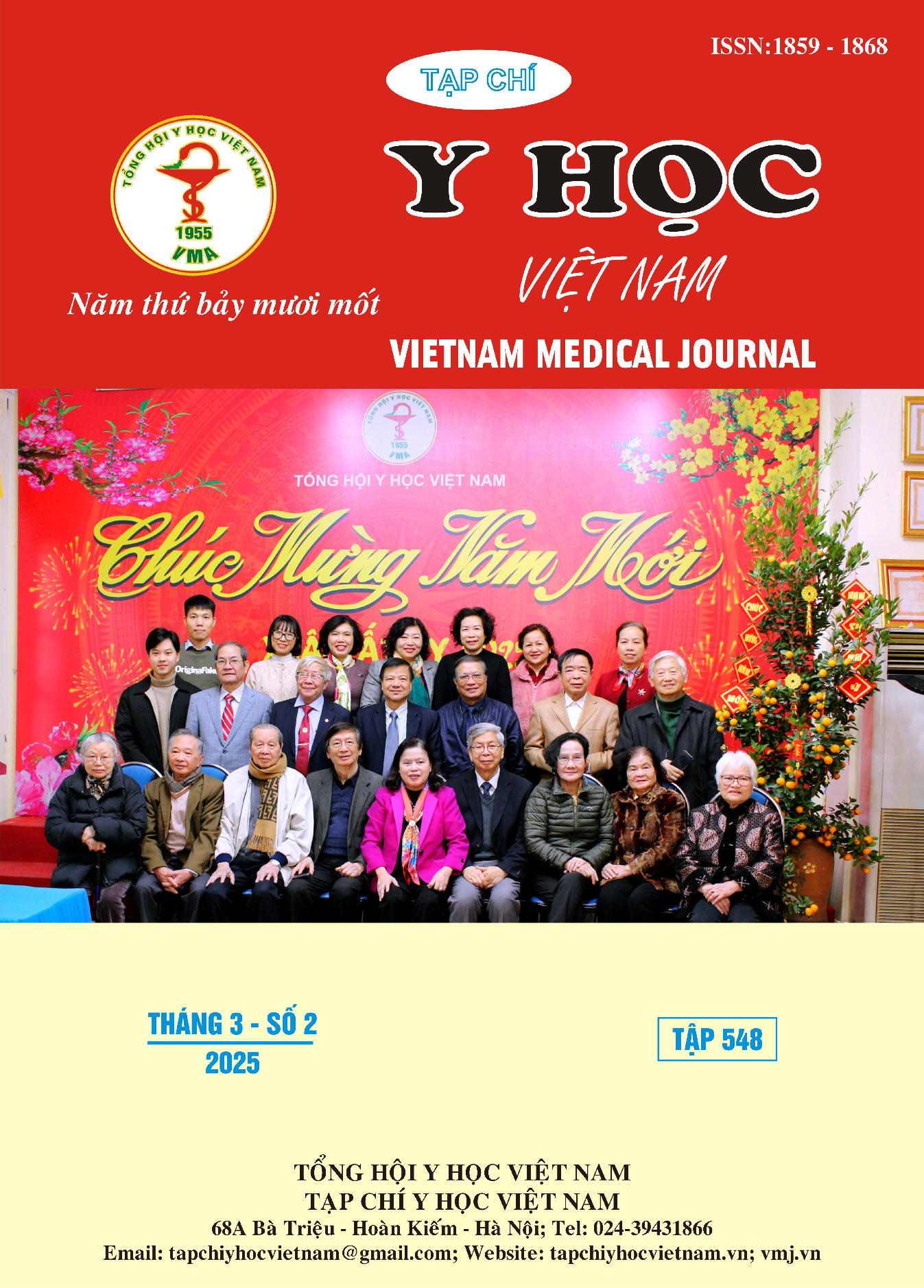CHANGES IN CLINICAL CHARACTERISTICS IN ADULT PATIENTS WITH TEMPOROMANDIBULAR DISORDERS (TMD) TREATED WITH A STABILIZATION SPLINT (SS) FOR 6 MONTHS
Main Article Content
Abstract
Objective: To evaluate certain clinical characteristics in adult patients with temporomandibular disorders (TMD) treated with a stabilization splint (SS) over a 6-month period from 2022 to 2024. Subject and methods: This interventional study was conducted on 31 adult patients (7 males and 24 females) treated with a hard stabilization splint (SS). Clinical characteristics were compared before and after 6 months of treatment. Results: Joint pain (arthralgia) before treatment: 90,32%; after treatment: 16,12%. Myofascial pain before treatment: 80,65%; after treatment: 9,68%. Joint sounds before treatment: 83,87%; after treatment: 61,29%. Limited mouth opening before treatment: 33,62 ± 2,34 mm; after treatment: 38,71 ± 2,65 mm. Temporal muscle pain before treatment: 88%; after treatment: 32%. Conclusions: Functional symptoms, including joint pain, joint sounds, and muscle pain, were the most common. Localized pain around the joint, particularly in the temporomandibular joint, temporalis muscle, and masseter muscle, was most frequently observed. After 6 months of treatment with a stabilization splint (SS), there was a statistically significant reduction in functional symptoms. The VAS pain score in patients with functional symptoms such as muscle pain, joint pain, and joint sounds-showed a marked decrease.
Article Details
Keywords
Temporomandibular joint disorders (TMD), Stabilization Splint (SS)
References
2. El-Moraissi A et al (2020). Effectiveness of occlusal splint therapy in the management of temporomandibular disorders: network meta-analysis of randomized controlled trials, Int J Oral Maxillofac Surg, 49(8), 1042-1056.
3. Dion Tik Shun Li, Yiu Yan Leung (2021). Temporomandibular Disorders: Current concepts and controversies in diagnosis and management, Diagnosis J (Basel), 11(3), 459-465.
4. Nguyễn Phúc Vinh, Trần Thị Phương Đan (2022). Đặc điểm lâm sàng, hình ảnh cắt lớp chùm tia hình nón và đánh giá kết quả điều trị rối loạn khớp thái dương hàm bằng máng nhai tại BV Trường Đại học Y Dược Cần Thơ năm 2021-2022, Tạp chí Y dược học Cần Thơ, 52, 192-198.
5. Nguyễn Hữu Nhân, Nguyễn Hữu Ân, Trần Ngọc Quảng Phi (2022). Đặc điểm lâm sàng trên bệnh nhân rối loạn khớp thái dương hàm, Tạp chí Y học Việt Nam, 518(1), 284-289.
6. Phạm Thu Trang, Phạm Thị Hồng Thuỳ, Trịnh Vũ Hải (2023). Đặc điểm lâm sàng và khảo sát các yếu tố nguy cơ của rối loạn chức năng khớp thái dương hàm, Tạp chí Y học Việt Nam, 529(1), 164-168.
7. Lê Nguyên Lâm, Nguyễn Phúc Vinh (2023). Đánh giá kết quả điều trị rối loạn khớp thái dương hàm bằng máng nhai tại BV Trường Đại học Y Dược Cần Thơ, Vietnam Journal of Community Medicine, 64(5), 223-231.
8. Huỳnh Lê Hiệp Nghĩa và CS (2023). Nghiên cứu triệu chứng rối loạn khớp thái dương hàm và các yếu tố tâm lý thói quen trên sinh viên nha khoa, Trường ĐH Y Dược Cần Thơ, Tạp chí Y dược học Cần Thơ, 57, 30-37.
9. Jenifer L Robinson et al (2020). Estrogen signaling impacts temporomandibular joint and periodontal disease pathology, Odontology J, 108(2), 153-165.
10. Grzeorz Zielínsk et al (2024). Association between Estrogen Levels and Temporomandibular Disorders: An Updated Systematic Review, Int J Mol Sci, 25(18), 9867-9875.


